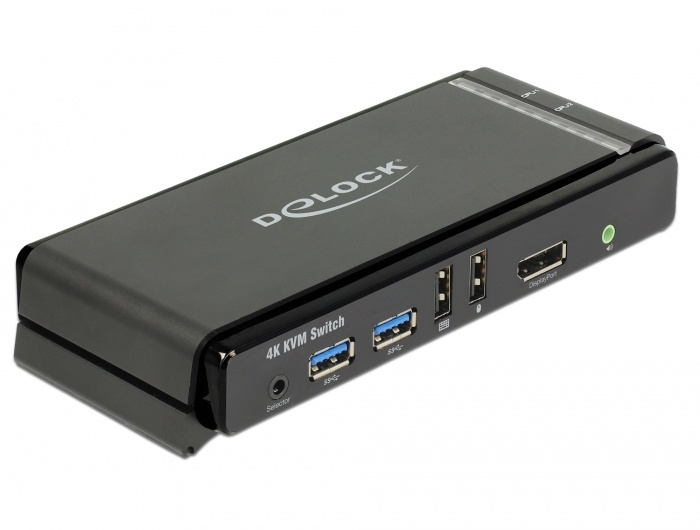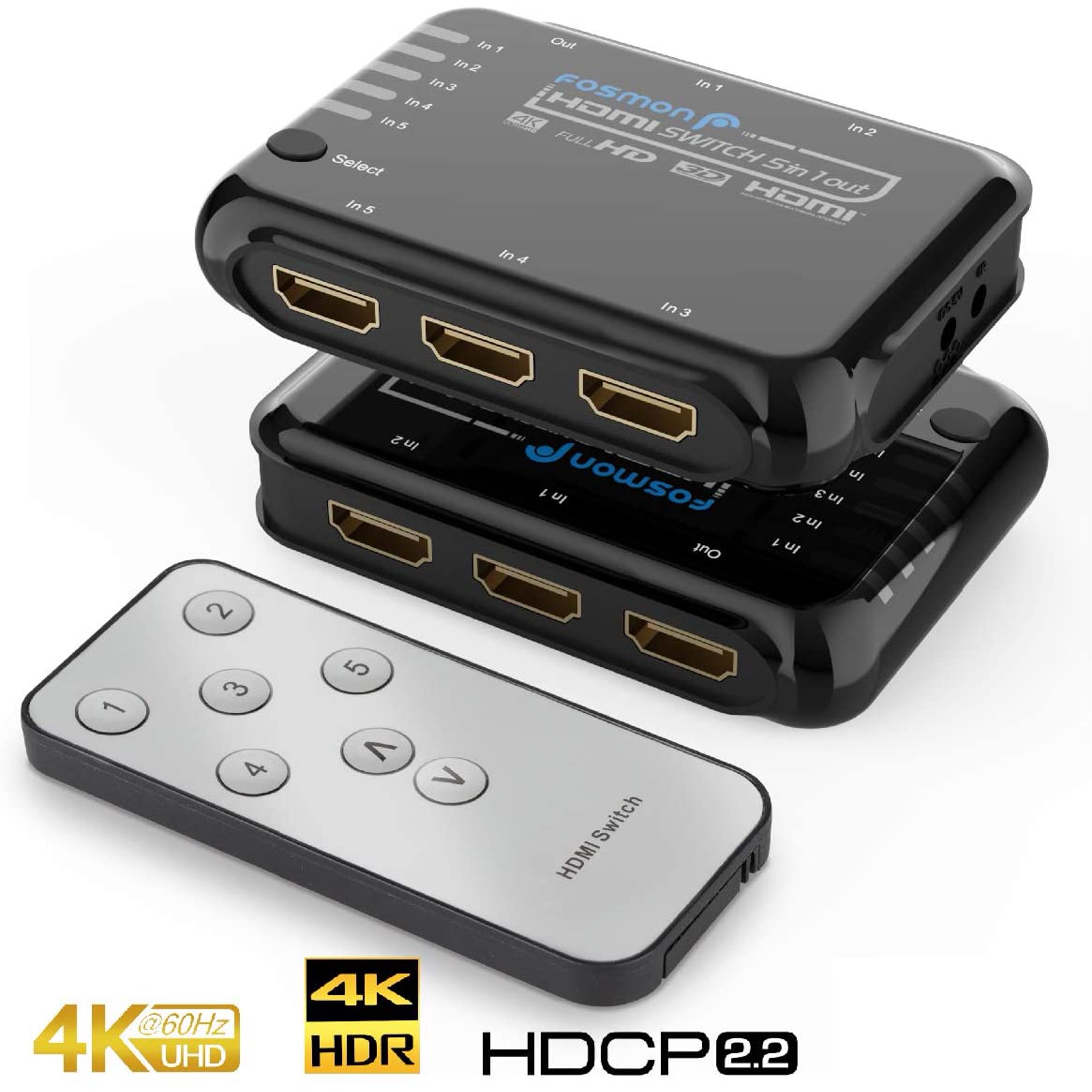
The rumored Nintendo Switch Pro might use a new graphic chip to allow games to reach a 4K resolution on the console.

An upgraded version of the Nintendo Switch console appears to finally be on the horizon. Multiple outlets have claimed that Nintendo's long-rumored plans for a higher-powered Switch are finally moving forward with an expected launch of sometime in 2021.

- Nintendo’s next-gen Switch hardware will reportedly uses Nvidia’s DLSS technology to output 4K to a TV. The Nintendo Switch ‘Pro’ will reportedly feature a 7-inch, 720p OLED screen.
- 4K UHD KVM Switch - 8 Port - HDMI / DP / DVI w/ 2 Port USB hub. Aten CS1844 4-Port 4K 60Hz HDMI KVM switch w/ USB 3.0; HDMI 2.0 & HDCP 2.2.
Reports from both Bloomberg and the Taipei outlet United Daily News allege that this system's specifications are currently in flux, according to sources familiar with Nintendo's plans. Bloomberg's late Monday report claims that Nintendo is considering upgrades like 'more computing power and 4K high-definition graphics,' and those details line up with a machine-translated version of UDN's report from earlier in the day.

Games? Portability?
Intriguingly, the UDN report points to an aggressive release schedule as early as 'Q1 2021,' with hardware production beginning by the end of 2020, but Bloomberg's report does not mention such a timeframe. Both reports mention a dearth of announced software for Nintendo Switch this holiday season, and Bloomberg reporter Takashi Mochizuki claims this is intentional on Nintendo's part, in order to bolster 'launch' software for the upgraded Switch next year.
Should Mochizuki's claim be true, we may very well see games like the announced sequel to Legend of Zelda: Breath of the Wild prepared for this new Switch. (That Zelda game was previously announced at E3 2019, only to vanish during this year's not-quite-E3 series of game announcements.) But neither of Monday's reports clarifies whether this system and the existing Switch will be interoperable, or whether either system will have exclusive software. And while both reports mention that this will be an 'upgraded Switch model,' neither spells out whether it will entirely resemble the existing Switch's hybrid home-and-portable nature, or whether an update for higher resolutions may require a home-only model.Gaming industry experts have long speculated that Nintendo could release an 'HD Switch' at some point, though previous rumors of such a console eventually fizzled. Those rumors pointed to the creation of a smaller Switch to fill the gap left behind by Nintendo's lower-priced 3DS console, and those rumors came to fruition late last year. Months later, Nintendo flatly denied the possibility of any new, unannounced Switch model arriving before the end of 2020.
AdvertisementWhile Nintendo will soon face higher-powered competition from the likes of PlayStation 5 and Xbox Series X, the underpowered Nintendo Switch hasn't struggled to sell against the current competition (if constant sell-outs at American retailers like Amazon and Best Buy are any indication). The company's 2020 mega-hit Animal Crossing: New Horizonsexceeded 22 million units sold in roughly 4 months, while the hardware itself has blasted past 61 million units sold since Switch launched in 2017.
Nintendo did not immediately respond to Ars Technica's questions about a possible new Switch model.
Last week, rumors broke that Nintendo’s rumored Switch update will feature capabilities like an OLED panel, a larger display (said to be 7 inches, up from 6.2 inches), and 4K output when docked.
Two of these things are unlike the others. A larger display and an OLED, with the associated benefits of that technology, could both be fitted to the Switch as it currently exists. The third — a boost to 4K rendering when docked — isn’t something the current Switch hardware can pull off without some kind of additional upgrade.
Be advised that all of the below is speculation. Nintendo has not released any comments on any future Switch designs and ExtremeTech does not possess inside information regarding the future of the console.
The Switch poses a unique upgrade challenge that consoles like the PS5 and Xbox Series S|X don’t have to deal with. Sony and Microsoft only have to concern themselves with the living room experience. Nintendo has to address the handheld market, too. That means any changes to the Switch can’t destroy its battery life or risk making the console too hot. Keeping the handheld at 720p achieves these goals in handheld mode, but how will Nintendo deliver the horsepower required for 4K rendering in docked mode? 4K packs 4x the pixels of standard 1080p, but it’s a 9x jump from the Switch’s current 720p target.
Nvidia and Nintendo can tackle this problem from a few different directions. While Nintendo could theoretically pay Nvidia to port the Switch’s T210 SoC from 16nm to 7nm, that chip only offers 25.6GB/s of main memory bandwidth and is unlikely to support docked 4K play with such a thin pipe.

If Nintendo wants to go with a new SoC architecture, Nvidia has plenty to choose from. Nvidia’s Jetson TX2 uses Pascal instead of Maxwell, and it’s possible the company has built a new SoC variant for Nintendo based on its Turing or Ampere GPU architectures. One of these two architectures would give Nintendo a better chance to hit 4K.
Nvidia and Nintendo have three paths available to them. First, brute-force. It’s unlikely that a second port of the aged T210 down to 7nm would deliver enough performance or memory bandwidth. The Pascal-based Jetson TX2 seems to be the minimum chip for the job, and Nintendo could always pay Nvidia to build an SoC based around either Turing or Ampere. This is the most straightforward option, the simplest, and probably the least likely to deliver a great 4K gaming experience. Even the 2.3x jump in memory bandwidth from the current Switch (25.6GB/s) to the Nvidia Jetson TX2 (59.7GB/s) isn’t nearly enough to pay for the 9x increase in pixels from 720p to 4K.
There are two alternative approaches we know of: Checkerboard rendering and DLSS.
Checkerboard rendering is a technique Sony popularized with the PlayStation 4 Pro a few years back. It’s a method of rendering that leaves gaps in between the drawn pixels, like a checkerboard. Used properly, the impact on visual quality compared with native 4K is small.
Checkerboard rendering doesn’t require any features specific to Turing or Ampere and could potentially be used by the Pascal-based TX2. It’s proven and it would save bandwidth and compute horsepower compared with the pure brute-force approach.
DLSS (Deep Learning Super Sampling) is a technique Nvidia has developed for anti-aliasing that leverages machine learning and artificial intelligence to improve real-time image quality. Nvidia’s DLSS 2.0 is said to provide near native-quality images while rendering between 25-50 percent of the pixels. Nvidia trains its DLSS model on DGX-equipped supercomputers and runs the workload on your local GPU (or, in this hypothesis, on your local Switch).
The Turing and Ampere GPU micro-architectures include specialized tensor cores for handling DLSS, so any attempt to add the feature to the Switch would require upgrading to an SoC based on one of these architectures. DLSS 1.0 didn’t work particularly well, but it also relied on a game-by-game approach to improving overall image quality.
DLSS 2.0 adopted a more generic architecture and allowed for the implementation of various quality modes. Bringing this technology to a handheld device would involve some heavy lifting, but Nintendo might be able to save power by only turning DLSS on when the console is in docked mode. If the tensor cores can be kept otherwise deactivated, Nintendo wouldn’t lose power in handheld mode just from including them on-die.
There are two reasons to be dubious of this idea. First, it requires Nintendo to make a pretty big leap forward for a mid-generation upgrade. Typically, Nintendo mid-cycle updates like the 3DS XL are faster, more efficient versions of the base platform. A Turing SoC might show up on 14nm, but any Ampere design would likely be on 7nm. Nintendo doesn’t usually leap for the latest and greatest CPU and GPU tech, so this kind of update would be a bit out of band for them.
Switch 4k Nintendo
Second, this idea assumes Nintendo would use tensor cores for upscaling, but not integrate ray tracing or other prominent Turing/Ampere features. Nvidia and AMD have packaged all these technologies together in other contexts, so it would be unusual to see them split now.
Univivi Hdmi Switch 4k 5 Port 5x1
The advantages of DLSS or checkerboard rendering are big enough that we still think we’re more likely to see them than not, but Nintendo would have to be willing to push a bit out of its comfort zone to adopt them. We’ll see what the company has to say as the year progresses.
Switch 4k Nintendo
Now Read:

